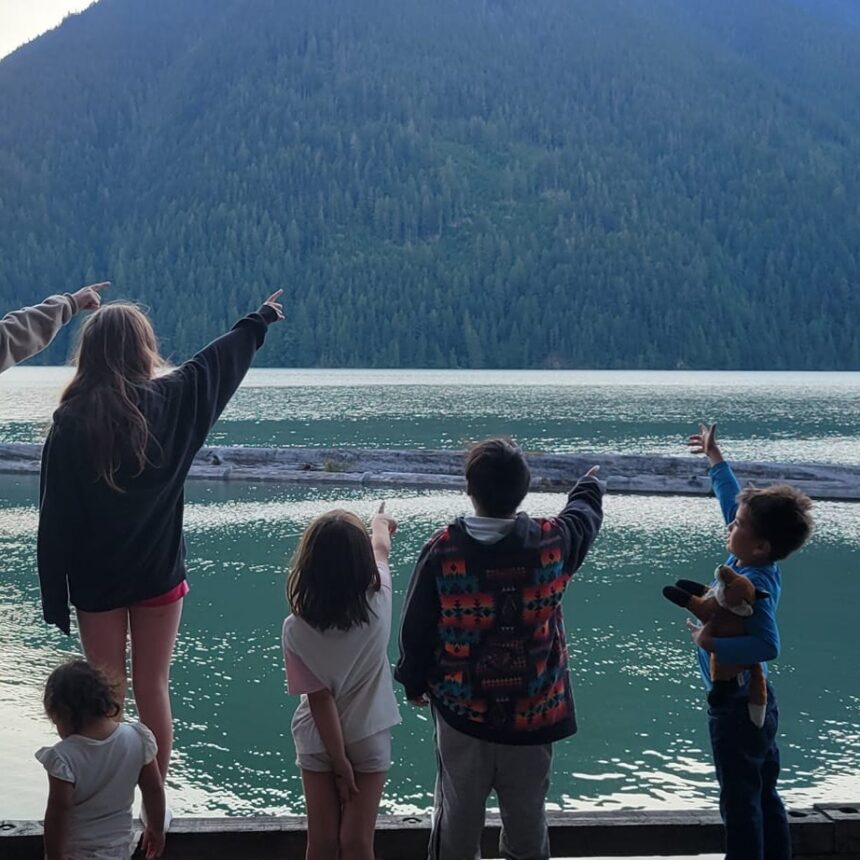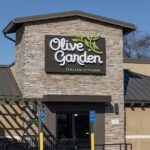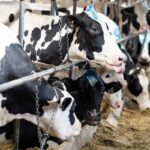As I weaved through the maze of folding chairs in Wuikinuxv Nation’s community hall last month, the urgency in Elder Thomas Henderson’s voice cut through the room’s gentle hum. “The salmon don’t recognize our boundaries or jurisdictions,” he told me, gesturing toward the large watershed map pinned to the wall. “But they remember their rivers. Always have.”
The gathering marked a watershed moment for Indigenous-led conservation efforts in British Columbia’s Central Coast. Wuikinuxv Nation is exploring innovative funding pathways to restore depleted salmon stocks through a newly launched Community Fisheries Agreement Incubator.
This initiative, developed in partnership with Coast Funds, aims to tackle what many coastal communities consider an existential crisis – the dramatic decline of Pacific salmon populations that have sustained Indigenous communities for thousands of years.
“We’re seeing returns at historic lows,” explained Danielle Shaw, Wuikinuxv Nation’s elected Chief Councillor. “Our community doesn’t just depend on salmon for food security – these fish are woven into our cultural fabric, our ceremonies, our very identity.”
The numbers paint a stark picture. According to recent Department of Fisheries and Oceans assessments, several salmon runs in the region have declined by over 70% since the 1990s. Conservation groups warn that without immediate intervention, some populations face potential collapse within a decade.
The incubator program approaches restoration through a distinctly Indigenous lens. Rather than imposing external conservation models, it centers Wuikinuxv knowledge systems, recognizing the Nation as the traditional steward of these watersheds since time immemorial.
Coast Funds has committed initial seed capital of $400,000 to develop sustainable financing mechanisms. This investment aims to leverage additional government and philanthropic support for habitat restoration, stock assessment, and Indigenous guardian programs.
The concept represents a significant evolution in salmon conservation finance. Traditional funding models have relied heavily on year-to-year government grants, creating uncertainty that hampers long-term planning. The incubator seeks to establish more reliable revenue streams through conservation financing tools that match the lifecycle of salmon restoration work.
“Healing these watersheds isn’t a three-year project – it’s generational work,” explained Brodie Guy, CEO of Coast Funds, during a riverside tour of potential restoration sites. “The financing mechanisms need to reflect that timeframe and the values of the communities doing this work.”
The innovation lies not just in dollars and cents, but in governance. The incubator emphasizes Wuikinuxv decision-making throughout the process, from identifying priority habitats to designing restoration approaches that incorporate traditional ecological knowledge.
At a practical level, early projects will focus on stream complexity restoration, addressing legacy impacts from historical logging practices that stripped watersheds of the fallen trees and varied channels that juvenile salmon need to thrive.
Walking along a tributary of the Wanukv River with fisheries technician James McKnight, the challenges become visible. What should be a complex network of pools, eddies and log jams has been transformed into what McKnight describes as “essentially a straight channel – salmon highway without any rest stops.”
Restoration techniques will include strategic log placements, riparian planting, and in some cases, complete channel reconstruction. These interventions, guided by elders’ knowledge of historical stream conditions, aim to recreate habitat complexity that supports the full salmon lifecycle.
The approach represents a significant departure from past conservation efforts that often excluded Indigenous communities from meaningful decision-making. The Department of Fisheries and Oceans has acknowledged this history, recently announcing a commitment to advance reconciliation through collaborative management arrangements with coastal First Nations.
Financial sustainability remains the central challenge. While government grants and philanthropic donations provide startup funding, the incubator aims to develop longer-term revenue streams through carbon offsets, conservation investment funds, and potentially, sustainable fisheries certification programs.
“We’re exploring every avenue,” Shaw told me as we watched community members prepare a traditional salmon feast. “But the most promising path combines economic development with conservation – proving these goals can reinforce each other rather than compete.”
The initiative has drawn attention from other Nations facing similar challenges. Representatives from Heiltsuk, Nuxalk, and Kitasoo/Xai’xais attended recent planning sessions, suggesting the model could scale across the coast if successful.
What makes the approach distinctive is its emphasis on Indigenous values throughout the funding mechanism. Conservation finance tools often prioritize ecological outcomes while overlooking cultural dimensions. The incubator explicitly recognizes cultural revitalization as inseparable from ecosystem health.
“When we restore these rivers, we’re not just saving fish – we’re securing our children’s connection to practices that define us as Wuikinuxv people,” explained community member Sarah Hanuse during a shoreline habitat assessment.
The pathway forward isn’t without obstacles. Climate change threatens to undermine restoration efforts as warming waters stress salmon populations. Meanwhile, competing resource interests continue to exert pressure on watersheds.
Despite these challenges, there’s cautious optimism among community members. At the feast concluding my visit, I watched three generations working together – elders directing, parents preparing, and children learning – embodying the multigenerational approach that defines the initiative.
“We’ve been salmon people since the beginning,” Elder Henderson reminded the gathering. “And with this work, we’ll remain salmon people long after I’m gone.”
As I departed the community by floatplane the following morning, the rivers below appeared as silvery threads connecting mountains to sea – a reminder that in salmon country, everything is connected, including the financing models now being reimagined to protect this ancient relationship.






